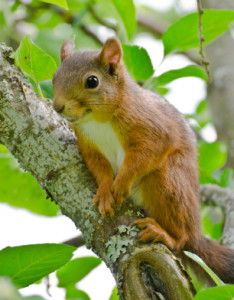 Imagine that you spray your foundation monthly, but the bugs keep returning. After years of work and gallons of insecticide, the strategy hasn’t helped. With pesticide-resistant bugs and environmental contamination in the news, experts have realized that chemical weapons aren’t always the best method for managing pests. This knowledge isn’t entirely new. Scientists have been developing integrated pest management (IPM) techniques for more than 50 years. IPM is a pest control philosophy that combines several different approaches to keep pests at acceptable levels. These strategies can be used to manage lawns, landscape plants and household pests.
Imagine that you spray your foundation monthly, but the bugs keep returning. After years of work and gallons of insecticide, the strategy hasn’t helped. With pesticide-resistant bugs and environmental contamination in the news, experts have realized that chemical weapons aren’t always the best method for managing pests. This knowledge isn’t entirely new. Scientists have been developing integrated pest management (IPM) techniques for more than 50 years. IPM is a pest control philosophy that combines several different approaches to keep pests at acceptable levels. These strategies can be used to manage lawns, landscape plants and household pests.
Whether we like it or not, pests are part of the local ecosystem. In some cases, they help control other bugs. In other cases, they provide food for other species. Instead of using a blanket approach to eradicate every living bug within your property lines, IPM focuses on ways to adjust the natural balance. Here’s how it works:
Cultural Methods
Cultural practices are the foundation of all IPM techniques. Whether we’re trying to control aphids on landscape plants or cockroaches in a kitchen, cultural methods focus on adjusting the natural habitat. Removing water sources, eliminating debris and sealing crevices are all effective ways to decrease pests in an eco-friendly way.
Mechanical Methods
Physically removing offending pests is another natural way that you can control or prevent infestations. In the yard, mechanical control methods include removing bugs by hand and spraying bushes with water to remove white flies. Inside the home, methods might include traps and vacuums to collect cockroaches, fleas, bed bugs and associated debris.
Biological Methods
Biological controls are safe and effective. These methods include natural soil-dwelling bacteria and enemy pest groups that can control rampant infestations. Bacillus thuringiensis is an especially effective bacterium that controls a variety of insects, including beetles, caterpillars and mosquitoes. However, some non-native pests don’t have natural enemies, and they require chemical treatments.
Chemical Methods
IPM professionals understand that insecticides can be dangerous when used excessively or incorrectly. That’s why chemical controls are a last resort. When they’re used, IPM professionals prefer plant-based insecticides, low-toxicity baits and insect growth regulators that pose the least risk to animals and the environment. Whenever they’re used, limited applications and spot treatments are most desirable to avoid disrupting the natural balance and harming beneficial insects.
When done correctly, integrated pest management techniques are effective at controlling pest populations while protecting the environment and saving money. To learn more about IPM and natural pest control solutions, call ABC Home & Commercial in Bryan-College Station. We’ll be happy to give you a free quote.